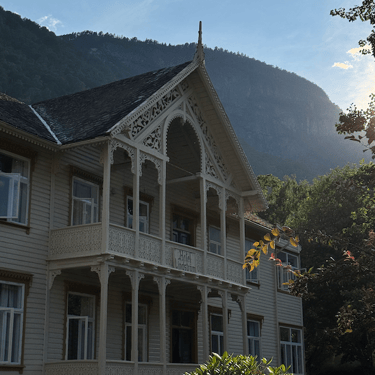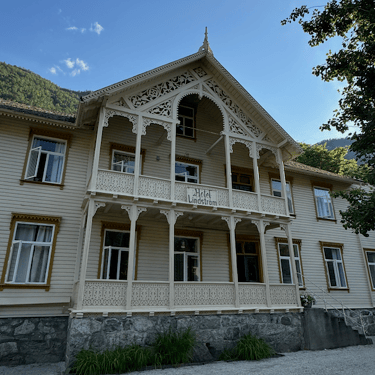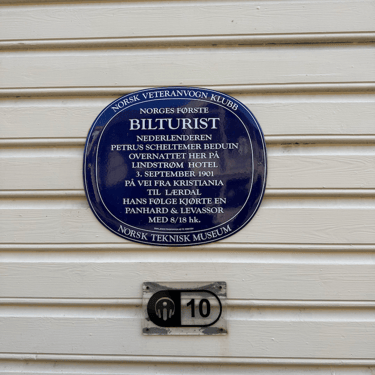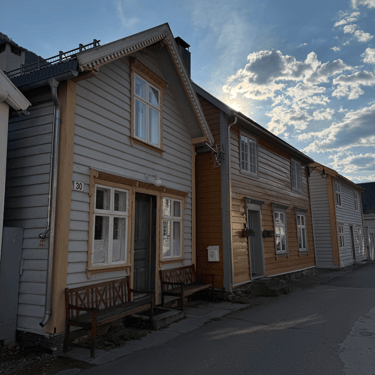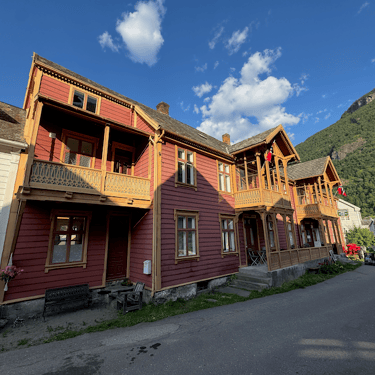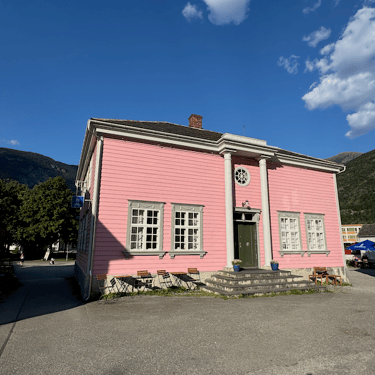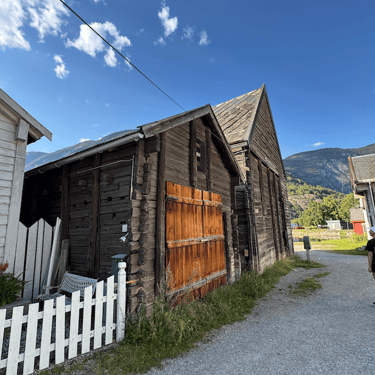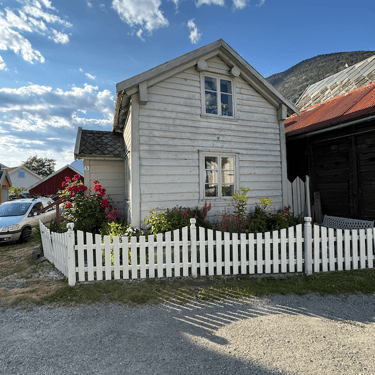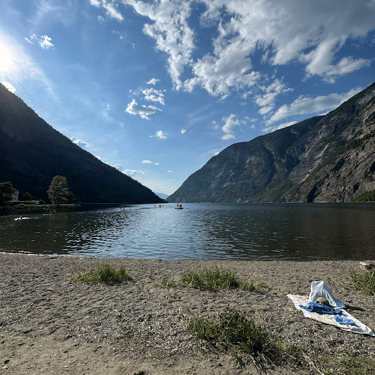Discover the Atlantic Salmon of Sognefjord & Lærdal
#Laerdal #NorwayTravel #VisitNorway #Sognefjord #HistoricNorway #LaerdalTunnel #ScenicNorway #NorwegianHeritage #WoodenHouses #RoadTripNorway #TravelTips #NordicTravel #TravelBlog #TravelNorway #CulturalHeritage #MarketTown #FjordNorway #HistoricTowns #TravelInspiration #TravelGuide
NORWAY
Zayera Khan
7/22/20254 min read
The Atlantic Salmon of Sognefjord in Lærdal
If you’re exploring Norway’s stunning Sognefjord region or driving along the National Scenic Route, don’t miss the chance to learn about one of the area’s most fascinating and important inhabitants: the Atlantic salmon.
The Lærdalselvi river—sometimes called “The Queen of Salmon Rivers”—offers a unique story that blends natural wonder, local heritage, and modern conservation.
The Salmon’s Incredible Life Journey
Atlantic salmon are born in freshwater rivers like Lærdalselvi. This amazing migration links river, fjord, and ocean—making the salmon a symbol of the region’s interconnected nature. Their lifecycle is a true adventure:
Eggs and Fry: Salmon eggs hatch in the clean, cool gravel of the riverbed. The young fish, called fry, live in the river for one to four years as they grow.
Journey to the Sea: When ready, they become “smolts” and head out through the Sognefjord, travelling all the way to the open Atlantic Ocean.
Return Home: After one to three years at sea, mature salmon use their remarkable sense of direction to return to the very river where they were born. Here, they spawn (lay eggs) in autumn and complete their lifecycle.
Why Salmon Matter in Lærdal
For centuries, salmon have been a vital part of local life. Lærdalselvi is world-famous among anglers, attracting fishing enthusiasts and royalty (including Norway’s King Harald V) for generations. The river supports tourism, provides jobs, and has even shaped the village culture.
But salmon are not just important for people—they are a “keystone species.” That means the whole ecosystem, from birds to bears, depends on the nutrients and balance the salmon bring as they journey between ocean and river.
The Wild Salmon Centre
The National Wild Salmon Centre in Lærdal is a must-visit:
Interactive Exhibits: See live salmon, learn about their migration, and explore how humans and nature are connected.
Family-Friendly: Kids and adults alike will enjoy hands-on activities, films, and quizzes.
Events: If you visit in late October, don’t miss the annual Spawning Festival. It features guided walks along the river, expert talks, cultural performances, and activities for all ages.
Café and Culture: The centre shares space with the Sogn Art Centre, so you can combine your visit with local art and a taste of regional specialties at the café.
Plan Your Visit
Location: Lærdal, at the end of the Sognefjord, easily accessible by car and public transport.
Best Time: The centre is open through the summer and autumn. Spawning season (October–November) is especially interesting.
What Else to Do: Stroll through historic Lærdalsøyri, hike along the fjord, or explore nearby stave churches and scenic viewpoints.
For more information, visit en.villakssenter.no.
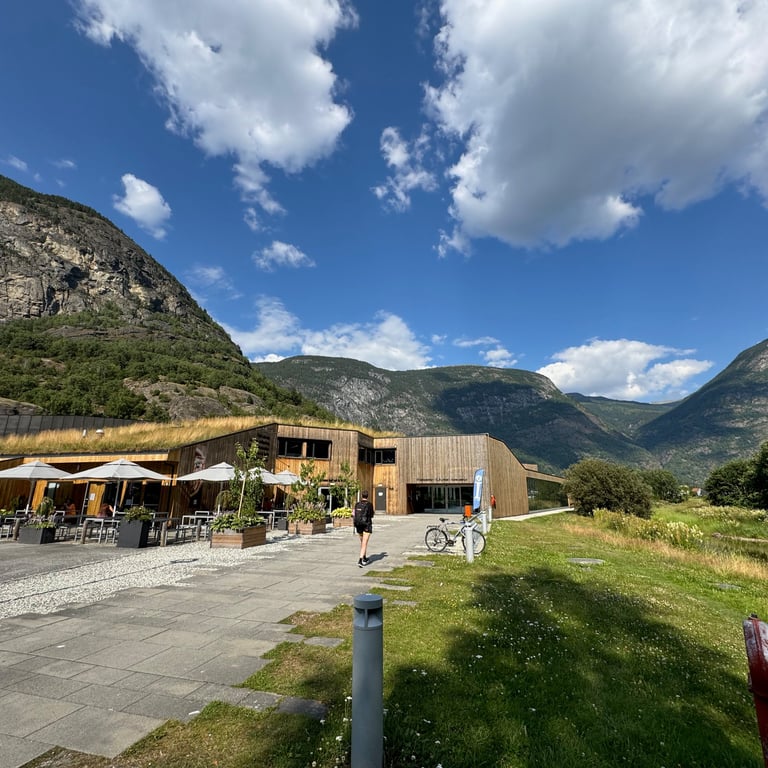
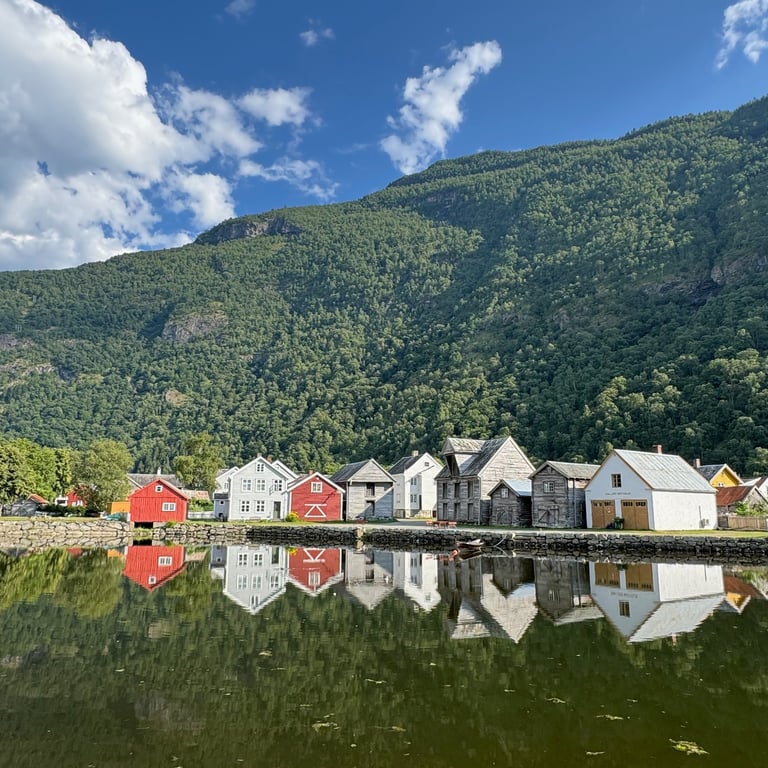
Discover Lærdal: A Historic Gateway Between East and West Norway
Nestled where the dramatic Sognefjord meets green valleys and mountain routes, Lærdal is a must-visit destination for travelers seeking history, culture, and stunning landscapes. This charming town has played a key role for centuries as Norway’s gateway between east and west, and its colorful old wooden town, Gamle Lærdalsøyri, is one of the country’s best-preserved heritage sites.
Fast Facts
Population: Around 2,200 people (about half in Lærdalsøyri)
Location: Halfway between Oslo and Bergen, perfect for a scenic stop
Old Town: Gamle Lærdalsøyri – over 170 protected wooden buildings, mainly from the 18th and 19th centuries
The Lærdal Tunnel: Engineering Wonder
Length: 24.5 kilometers (15.2 miles) – the longest road tunnel in the world
Opened: 2000
Purpose: The Lærdal Tunnel connects Lærdal to Aurland, bringing visitors easily and safely into the heart of the Sognefjord region. Built to provide a safe, year-round road connection between eastern and western Norway, replacing the dangerous mountain crossings that were often closed in winter.
Experience: Every 6 km, special lighting creates blue “caves” where drivers can rest and reduce fatigue.
Historic Importance
Ancient Trade Hub: Lærdal developed as a central market town thanks to its location at the crossroads of important trade routes.
Kongevegen (The King’s Road): The first road for horse-drawn carts, built in the late 1700s, connected east and west for the first time. You can still walk sections of this historic route today.
Old Jetty: Before 1860, all transport continued by boat from Lærdal’s “Lieutenant’s Jetty.”
Agriculture: The fertile valley is famous for potatoes, vegetables, fruit, and berries, still important for the local economy.
Architecture and Atmosphere
Wooden Heritage: Gamle Lærdalsøyri features around 170 wooden houses from the 18th and 19th centuries, preserved in their original style.
House Styles: Look for the classic “Akershus-houses” and narrow Swiss-style trading houses with tall, elegant details—some originally used as both homes and market stalls.
Lærdalsmarknaden: Norway’s Oldest Market Tradition
Historic Roots: The Lærdal Market (Lærdalsmarknaden) began as early as 1596 with royal permission. It was once the biggest market in western Norway, held every autumn.
Modern Market: Today, three annual markets fill the town with life—summer (June), autumn (September), and Christmas (November). Visitors find local crafts, food, entertainment, and a unique festival atmosphere. Historically, the market was not only for trade but also a meeting place for people from all over the region—a tradition that continues today.
Why Visit Lærdal?
Must-see sites include:
Borgund Stave Church: One of Norway’s best-preserved medieval churches, built c. 1180, just 25 km away.
National Wild Salmon Center: Interactive exhibits and live displays on the famous Lærdalselvi salmon river.
Unique Heritage: Walk the cobblestone streets of the old town, stay in historic guesthouses, and experience traditional Norwegian culture first-hand.
Preservation: After a fire in 2014, local efforts saved or rebuilt most of the historic wooden buildings, ensuring that Lærdal’s charm endures.
Quick Tips for Visitors
Getting Here: Easy access by car or bus via the Lærdal Tunnel; midway between Oslo and Bergen.
Best Time to Visit: Summer for markets and outdoor activities, autumn for vibrant colors, or winter for a quiet, historic atmosphere.
Accommodation: Choose from historic hotels, cabins, or local guesthouses—many in preserved wooden buildings.
Eat & Shop: Sample local farm produce, fresh-baked goods, and handmade crafts in Lærdalsøyri’s cafés and shops.
